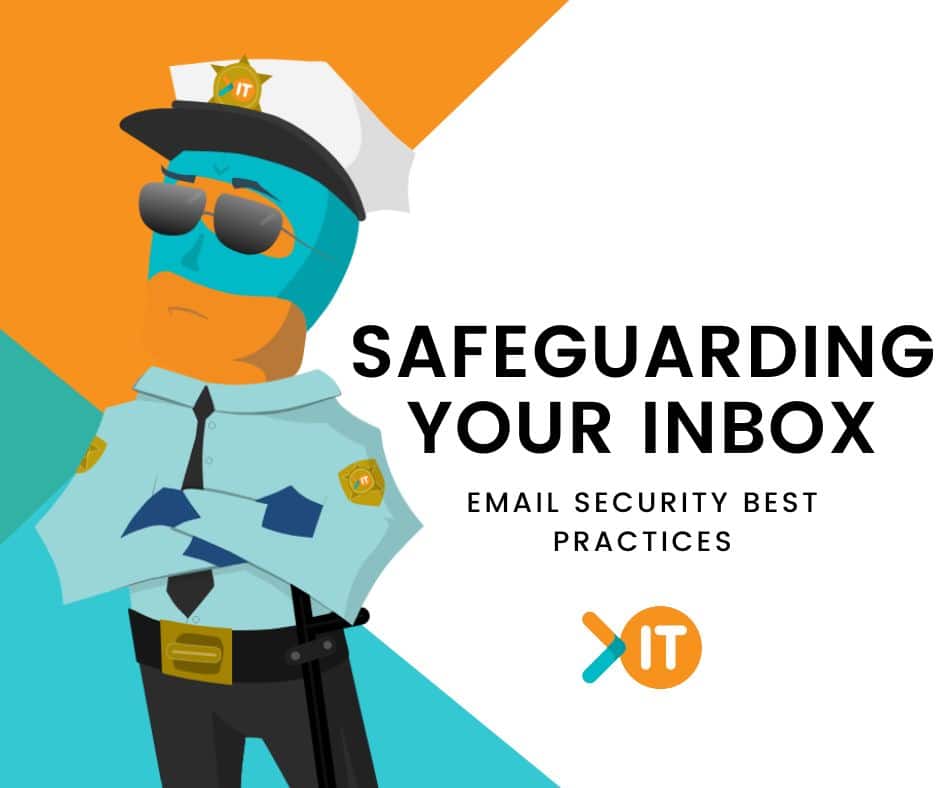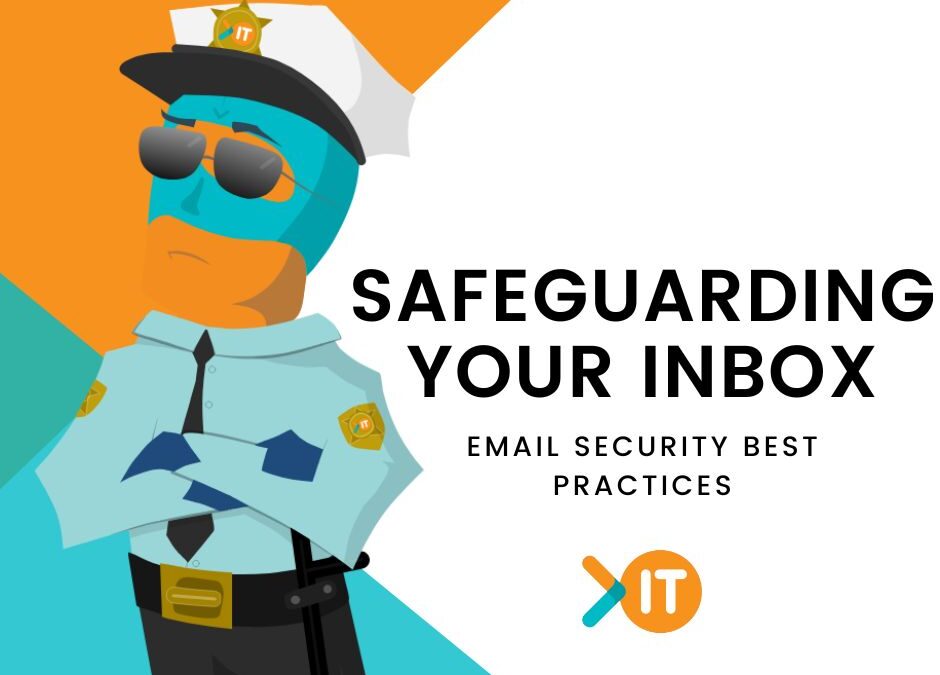In this digital age, our inboxes are buzzing with messages, and it’s vital to keep our emails secure. After all, our emails hold valuable personal and professional information, making them juicy targets for cybercriminals.
But worry not!
We’ve got your back with a comprehensive guide to email security best practices. So, grab a cuppa and let’s dive right in!

1. Create Strong and Unique Passwords
Let’s start with the basics: creating strong and unique passwords. It’s like building a sturdy fortress around your email account.
Avoid common choices like “123456” or “password“, or your pet or childrens names (seriously, let’s be more creative!).
Instead, opt for a combination of uppercase and lowercase letters, numbers, and special characters. Think of a passphrase that’s memorable to you but hard for others to guess.
There are also a number of ‘password vault‘ services that will generate (and save) complex passwords for each service or website you use. No excuse using the same password for everything there!
And remember, your password is like a secret code – don’t share it with anyone!
2. Embrace Multi-Factor Authentication (MFA)
Double the protection, double the peace of mind!
Multi-factor authentication (MFA) adds an extra layer of security to your email account.
It requires a second form of verification, such as a temporary code sent to your mobile phone or authenticator app. Microsoft has an authenticator app that works across a number of services, and is fast and easy to use – check it out here.
Even if someone manages to crack your password, they’ll need that second key to unlock your inbox – and you’ll know if someone has been trying to get in!
So, activate MFA whenever possible and keep those cyber sneaks at bay!
3. Watch out for Phishing Attacks
Let’s be on our guard against sneaky phishing attacks. These scammers can be pretty crafty!
Phishing emails often masquerade as legitimate messages and aim to trick you into revealing sensitive information.
- Be cautious when you receive emails asking for personal or financial details.
- Avoid clicking on unfamiliar links or downloading attachments from unknown sources.
- Always double-check the sender’s email address and be on the lookout for telltale signs of phishing such as:
- poor grammar,
- generic greetings,
- or urgent requests for information.
When in doubt, don’t take the bait!
4. Keep Software Up to Date
Just like a good ol’ car service, keeping your email software up to date is essential.
Software updates often include important security patches that fix vulnerabilities. These patches address known issues that cybercriminals can exploit to gain unauthorized access to your emails.
So, make sure to enable automatic updates whenever possible.
Sit back, relax, and let the software do its magic while you focus on the important things in life.
5. Add an Extra Layer with Email Encryption
Let’s give your emails an extra layer of protection – it’s like wrapping them up in a digital cloak!
Encryption is the secret ingredient here. It scrambles your messages, making them unreadable to anyone except the intended recipient.
Look for email providers that offer end-to-end encryption, where your message is encrypted from the moment it leaves your device until it reaches the recipient’s device. Additionally, you can consider using add-ons and plugins that provide encryption services for your emails.
It’s like a secret code between you and your recipient, ensuring that your communications remain private and secure.
6. Be Cautious on Public Wi-Fi
Ah, public Wi-Fi – it can be as unpredictable as Melbourne weather (yes, I’m bitter about it).
When you’re out and about, be cautious when accessing sensitive information like your emails on public Wi-Fi networks. These networks are often unsecured, making it easier for cyber tricksters to intercept your data.
If you must use public Wi-Fi, consider using a virtual private network (VPN). A VPN creates a secure, encrypted tunnel between your device and the internet, protecting your data from prying eyes. It adds an extra layer of security when you’re connected to public Wi-Fi hotspots, allowing you to browse and access your emails with confidence.
Better yet, just hot spot to your phone and save the sensitive work for the home or office.
7. Handle Email Attachments with Care
Attachments can be like surprise gifts – you never know what’s inside!
Before opening an attachment, double-check that it’s from a trusted source.
Cybercriminals often use email attachments as a way to deliver malicious software like malware or spyware, onto your device. Scan attachments with reliable antivirus software to catch any hidden threats. If something looks fishy or you’re not sure about an attachment, it’s better to play it safe and delete it.
Remember, your email security is worth more than the risk of opening suspicious attachments.
8. Practice Good Email Hygiene
Practicing good email hygiene is essential for a healthy and secure inbox. Here are a few tips:
- Avoid opening spam emails: Those suspicious messages lurking in your spam folder are best left untouched. They often contain phishing attempts, malware, or other forms of unwanted content.
- Be cautious with email subscriptions: When subscribing to newsletters or promotional emails, make sure they’re from reputable sources. Unsubscribe from newsletters that you no longer find useful to minimize potential risks.
- Use separate email addresses: Consider using different email addresses for different purposes. For example, one for personal use, one for work-related communication, and another for online shopping. This way, if one email address gets compromised, the others remain unaffected.
- Regularly review your email settings: Take some time to review and update your email settings. Enable any additional security features provided by your email service provider, such as spam filters or email forwarding restrictions.
By following these tips, you’ll be well on your way to safeguarding your inbox from cyber sneaks and basking in the advantages of email security. Remember, staying vigilant and taking proactive steps to protect your emails is the key to a worry-free online experience.
Happy emailing!
Want to make sure your email is as secure as it can be?
We’re here to help! Get in touch with us or book a call to chat more about how you can boost your online security.

